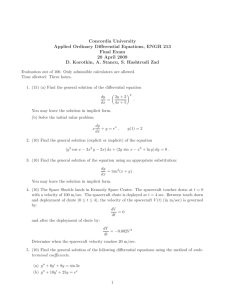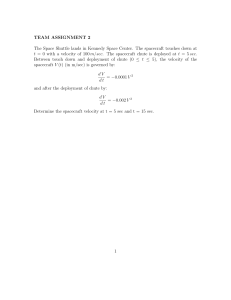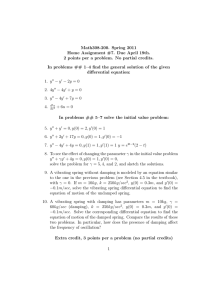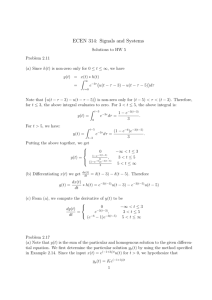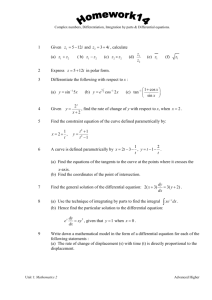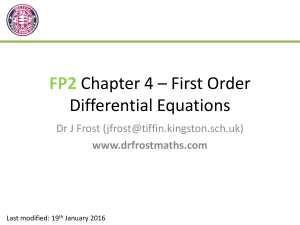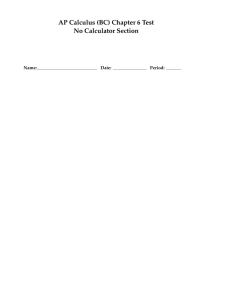Concordia University Applied Ordinary Differential Equations, ENGR
advertisement
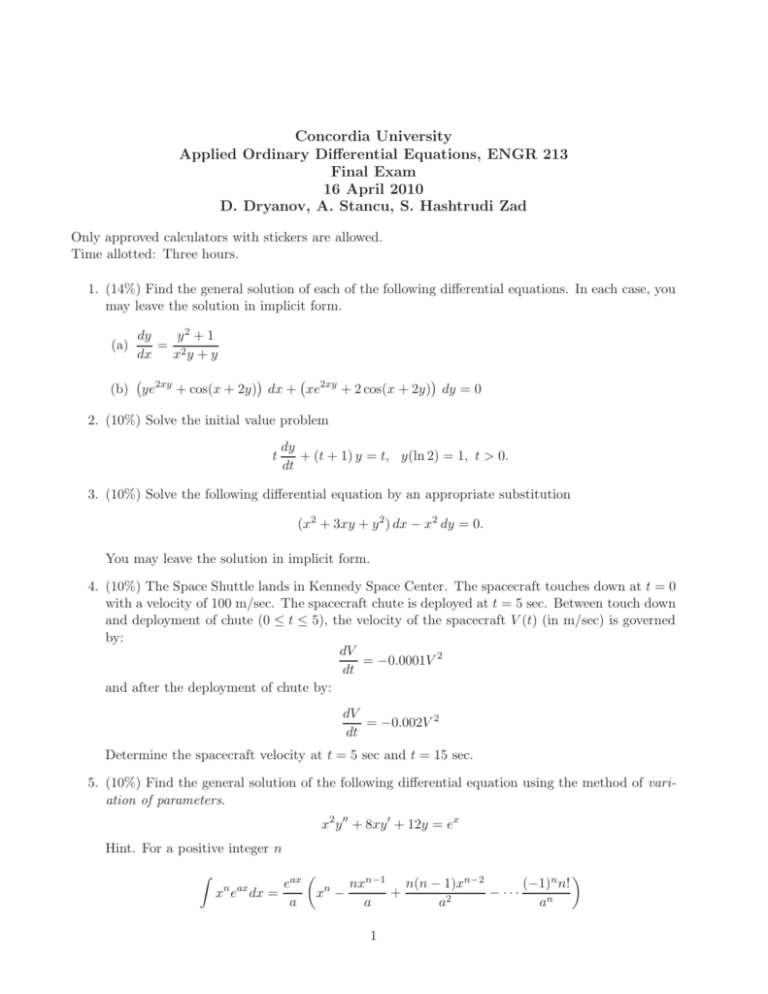
Concordia University Applied Ordinary Differential Equations, ENGR 213 Final Exam 16 April 2010 D. Dryanov, A. Stancu, S. Hashtrudi Zad Only approved calculators with stickers are allowed. Time allotted: Three hours. 1. (14%) Find the general solution of each of the following differential equations. In each case, you may leave the solution in implicit form. (a) dy y2 + 1 = 2 dx x y+y (b) ye2xy + cos(x + 2y) dx + xe2xy + 2 cos(x + 2y) dy = 0 2. (10%) Solve the initial value problem t dy + (t + 1) y = t, y(ln 2) = 1, t > 0. dt 3. (10%) Solve the following differential equation by an appropriate substitution (x2 + 3xy + y 2 ) dx − x2 dy = 0. You may leave the solution in implicit form. 4. (10%) The Space Shuttle lands in Kennedy Space Center. The spacecraft touches down at t = 0 with a velocity of 100 m/sec. The spacecraft chute is deployed at t = 5 sec. Between touch down and deployment of chute (0 ≤ t ≤ 5), the velocity of the spacecraft V (t) (in m/sec) is governed by: dV = −0.0001V 2 dt and after the deployment of chute by: dV = −0.002V 2 dt Determine the spacecraft velocity at t = 5 sec and t = 15 sec. 5. (10%) Find the general solution of the following differential equation using the method of variation of parameters. x2 y ′′ + 8xy ′ + 12y = ex Hint. For a positive integer n Z eax x e dx = a n ax (−1)n n! nxn−1 n(n − 1)xn−2 + − · · · x − a a2 an n 1 1 6. (12%) The following circuit consists of an inductor L = henry, a resistor R = 1 ohm, and a 2 1 capacitor C = farad connected to an input voltage E(t). The resistor voltage v(t) satisfies the 4 following ordinary differential equation. L dv d2 v + + v(t) = E(t) 2 dt R dt Assume that at t = 0 no energy is stored in the inductor and the capacitor, and hence, v(0) = 0 and v ′ (0) = 0. Furthermore, for t ≥ 0, the input voltage is E(t) = sin 3t volts. LC (a) Find the voltage v(t) (for t ≥ 0). (b) Identify in v(t), the transient terms and the steady state terms. L + E(t) − C R + v(t) − 7. (10%) (a) Find the general solution of the differential equation (x2 − 1) y ′′ + y = 0 by using the power series method about the ordinary point x = 0. Write out all terms in the solution up to, and including x5 . (b) Find the singular points of the differential equation. What is the minimum radius of convergence of the power series solution obtained in (a)? 8. (12%) Solve the linear system either by the method of systematic elimination or by a matrix method dx = 4 y + sin(t) dt dy = −x + cos(t) . dt 9. (12%) Solve the initial value problem by using eigenvalues and eigenvectors dx dt dy dt dz dt = y −x = 2y = y + z − x, x(0) = 1, y(0) = 1, z(0) = 1. 2
